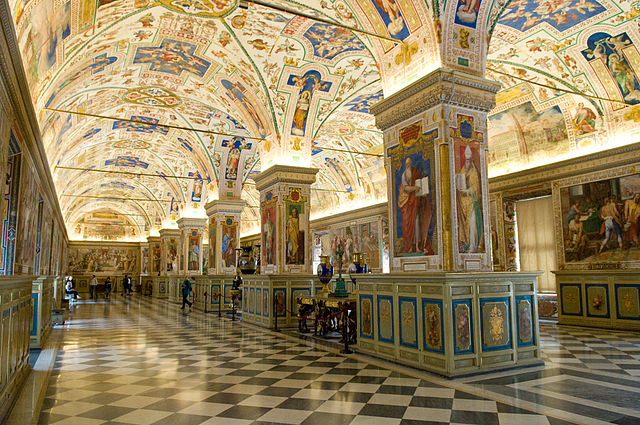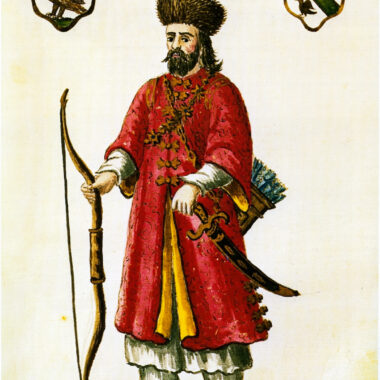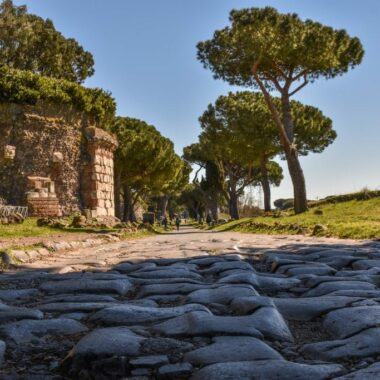I wonder how many people think of spending a bit of time in a library when they’re in Italy. Of course, I’m not talking about your average small town affair, filled with tattered 1960s editions of the classics and a bunch of recent best sellers. No, nothing like that.
I’m talking about ceiling-high bookshelves, carved wood reading tables and frescoed walls. I’m, more than anything else, talking about scents: those of old paper, of ink drying on parchments, of the poignant sense of awe hitting you while holding the first edition of a favorite novel in your bare hands. It’s a world of memories and past, that of historical libraries, a world forgotten by most, cherished as a first born child by others; whichever side you take, these are the cradle of Mankind’s essence and knowledge. Italy, of course, is home to some of the most important historical libraries in the world, as well as some of the most beautiful.
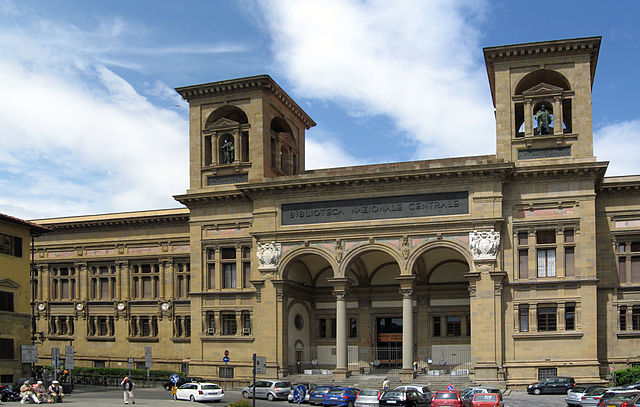
Firenze: Biblioteca Nazionale Centrale
The largest library in Italy, the Biblioteca Nazionale Centrale is in Piazza dei Cavalleggeri, in an early 20th century building created by architect Cesare Bazzani. More than 6 million volumes call it home. Along with them, almost 3 million pamphlets, 25 thousands manuscripts and 1 million autographs: if you could lay each of its shelves on a straight line, they’ll cover around 135 km, just a handful of miles less than the distance between Chicago and Milwaukee. By law, the Biblioteca Nazionale Centrale has the duty to collect each and every volume published in the country.
Part of its collection was almost destroyed in 1966 during the dramatic flood that hit the city, but thanks to the amazing work of volunteers coming from the whole country, today remembered with the name of “mud angels,” the library’s immense patrimony of knowledge was mostly entirely saved.
Roma: Biblioteca Nazionale Centrale
The second largest library in Italy is located near the Termini station, in the capital’s city centre. Its books’ patrimony is almost as large as that held in the Biblioteca Nazionale Centrale in Florence, with 4 and a half million volumes. Originally housed in the Jesuits’ Collegio Romano, built in the 16th century and today home to the Ministero dei Beni Culturali (the Italian ministry of fine arts and architecture), the library’s current main building was inaugurated in the mid-70s. One of the most famous manuscripts kept in the library is Nostradamus’ Vaticinia: Nostradamus’ prophecies.
Napoli: Biblioteca Nazionale Vittorio Emanuele III
Third in size in the country, the Biblioteca Nazionale Vittorio Emanuele III in Naples was created at the end of the 18th century, under the name of Reale Biblioteca di Napoli, Reale Biblioteca Borbonica (the Bourbons had been reigning over Naples at the time) and, after the unification, Biblioteca Nazionale. Later, in the 20th century, the institution took up the name of Savoia king Vittorio Emanuele III. Originally located in Palazzo degli Studi, today home to the famous Museo Archeologico of Naples, its collection includes one million and a half volumes, almost 20 thousand manuscripts and, crucially, the entire collection (1800 items) of the Herculaneum Papyri, the only example of a classical library ever reaching modernity. In 1922 the library was moved to its current location, Palazzo Reale, thanks to the involvement of seminal contemporary Italian philosopher Benedetto Croce and with the placet of the king, Vittorio Emanuele III (hence the name).
Roma: Biblioteca Apostolica Vaticana
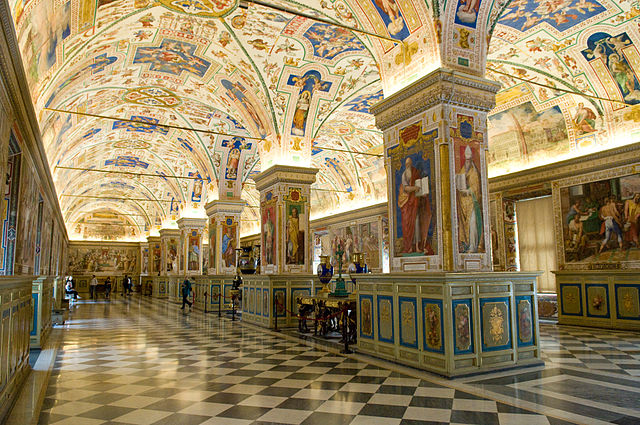
Talking about the Biblioteca Apostolica Vaticana means talking about the crème de la crème of research libraries: a true scholar’s dream.
Though officially established in 1475, the core of its collection dates further back in time, making it one of the oldest libraries in the world. From an historical point of view, its collection is probably the most significant. The Vat, as it’s commonly known among scholars – a lover’s nickname, one may say – comprises almost 1 and a half million printed volumes and an amazing 75 thousand manuscripts. It is known as one of the best research libraries, especially in the fields of history, philosophy and theology. The Vat’s been digitising its full manuscript collection, a great help to researchers all over the world.
Strictly connected to the Vatican Library are the Archivi Segreti Vaticani (the Vatican Secret Archives), which became an independent entity in the 17th century. The Archives contain all documents related to the Holy See and, even if they were indeed, once upon a time, accessible to almost no one, the “secret” in their names doesn’t come from there: it does refer to the original Latin word “secretum” which means private rather than “secret.” In any case, all documentation from 1939 onward is still … well… not available to the public.
Being within the Vatican walls, nay, being in Rome, you should expect only beauty from the historical location of this library, the Palazzi Vaticani, opening onto Bramante’s Cortile del Belvedere and decorated with several astonishing frescoes. The library’s collection also includes several objects of historical and artistic relevance, from coins and medals to a large amount of archaeological findings coming from the Roman Christian catacombs.
Last curiosity: the oldest manuscript of the Bible extant, the Codex Vaticanus, is held here.
Firenze: Biblioteca Medicea Laurenziana
The Biblioteca Medicea Laurenziana is one of Italy’s most important historical libraries, home to 12 thousand manuscripts and a large number of early printed books. It’s hosted in a building annexed to the Basilica di San Lorenzo compound, in Florence. Beside the relevance of its collection, the library is known for its architect: Michelangelo Buonarroti. Among the most important codices hosted here, the codex Nahuatl Florentine, which is the main source for pre-colombian history of the Aztecs available, and the codex Amiatus, where the earliest manuscript of the Latin Vulgate Bible is found.
Roma: Biblioteca Angelica
The Biblioteca Angelica was established in 1604 in Piazza Sant’Agostino near Piazza Navona. Known for its varied collection, it is the library of choice for all scholars with an interest in the works and life of Saint Augustine of Hippo. Along with the Biblioteca Ambrosiana in Milan and the Bodleian Library in Oxford, the Biblioteca Angelica is one of the first examples of public libraries. It was created thanks to a donation made by bishop Angelo Rocca.
Milano: Biblioteca Ambrosiana

A product of the 17th century, the Biblioteca Ambrosiana takes its name from the patron saint of the city of Milan, Saint Ambrose. Its patrimony is culturally and historically immense and includes many manuscripts from the famous Bobbio scriptorium, as well as a codex, the codex Atlanticus, containing the words and sketches of Leonardo da Vinci. It opened to the public on the 8th of December 1609, the second public library opening in Europe.
